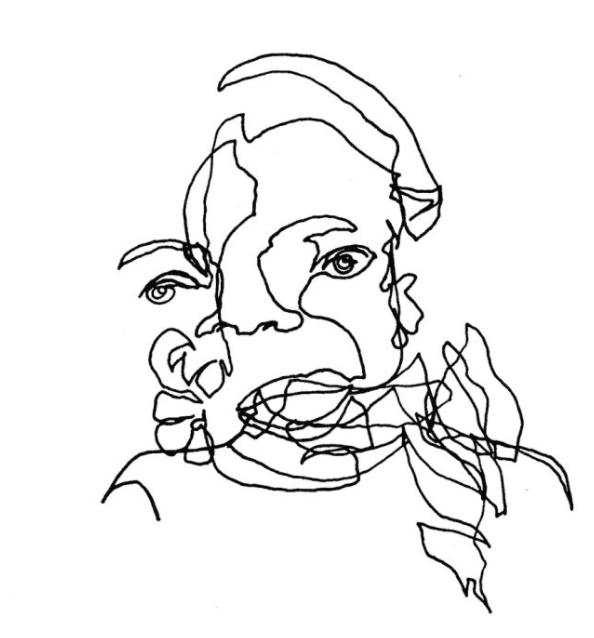Blind Contour Line Drawing September 7-9
- drssmedia
- Oct 26, 2020
- 3 min read
. WHAT DO YOU NOTICE ABOUT THIS DRAWING?

image credit: https://bluedewdesign.com/blindcontourdrawing/
Tuesday Sept 7
Today and this coming week we will practice blind contour line drawing - a foundational drawing exercise that helps students learn to carefully observe and render their subject. Remember that making a blind contour line is a practice in which you will look only at your subject and not at your paper - an excellent practice for training the hand to follow the eye.
WATCH THIS VIDEO DEMONSTRATION https://www.youtube.com/watch?v=zmFxU9_RmWU


TIPS:
* Arrange your sketchbook so that you cannot see your paper.
* Keep your pencil attached to your paper (don't lift it - theres no erasing- we are not worried about what happens on the paper - we are training our hand to follow our eye) - you should have one continuous, unbroken line
*Pick a good starting point and allow your eye to travel VERY SLOWLY along and edge you see - edges include outside and inside lines - meaning the outside form and following other edges as you arrive at them - traveling inside along edges of wrinkles, folds, highlights, shadow, etc.
*Try to pace your hand to move in the same direction, at the same pace as your eye is moving THE KEY IS SLOWLY SO YOUR HAND CAN KEEP UP WITH YOUR EYE.
*Take your time and be patient - don't look at your paper at all. If you feel your pencil run off the page, simply feel your way back onto the page and find where you left off and keep going.
*If you only end up with an outline and you are done too quickly then start again until time is called.You should be constantly drawing until time is up.
ASSIGNMENT:
* GUIDED IN CLASS PRACTICE: Drawing your hands. 1. Make a "thumbs up" sign with your non-drawing hand. As you are drawing I will remind you of the above tips. Continue drawing until I say time is up. 2. Make a "peace sign" with your non-drawing hand and repeat.
3. Spread your fingers wide with your non-drawing hand and repeat.
* Take a look at your drawings! Its ok - even good if they just look like scribbles at this point - this takes practice and patience! The more you practice this technique the better your observation skills and coordination between your hand and eye will develop and the better your realistic drawing skills will become later!
*On the page of your drawings, write the date, and list one thing you were able to do well ( not look at your paper, or keeping your pencil attached to the paper etc) and one thing you want to do better (not looking at your paper, or taking your time, slowing your pace, etc.)
Wednesday September 8
ASSIGNMENT:
* GUIDED IN CLASS PRACTICE: Drawing inanimate objects using the blind contour line techniques. 1. Draw your shoe. 2. Draw each other - try different colors and overlapping drawings on page
*On the page of your drawings, write the date, and list one thing you were able to do well ( not look at your paper, or keeping your pencil attached to the paper etc) and one thing you want to do better (not looking at your paper, or taking your time, slowing your pace, etc.)
Thursday September 9
ASSIGNMENT:
* GUIDED IN CLASS PRACTICE:Pair up, we will spend 5-7 minutes drawing each other. Then five minutes to share and laugh and forgive each other in between, and then switch models. Before you begin, reflect on you'r drawing and the specifics of what you need to focus on - write down a goal for yourself.



















Comments